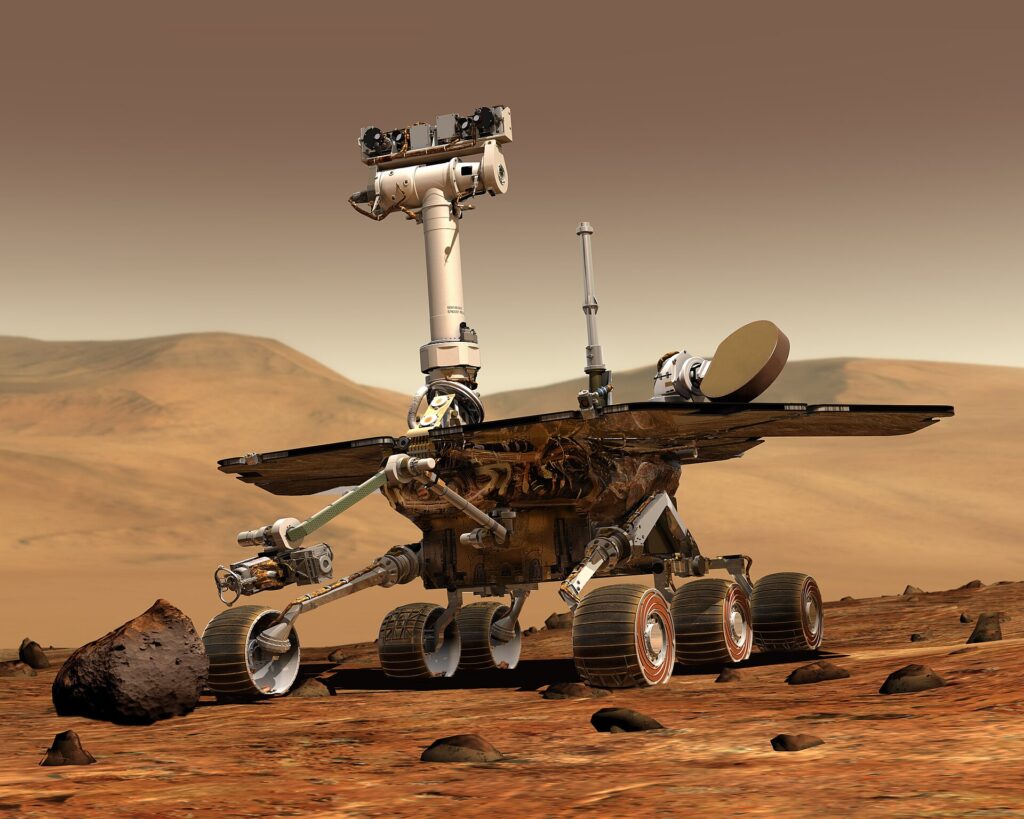a) Opportunity
The Mars rover Opportunity, a robotic explorer launched by NASA in 2004, played a pivotal role in advancing our understanding of Mars, particularly in uncovering evidence of the planet’s wetter past. This discovery was a monumental step in the exploration of the Red Planet, shedding light on its geological history and the potential for it to have supported life.
Opportunity’s mission, which far exceeded its planned 90-day lifespan, involved traversing the Martian surface and conducting various scientific experiments. The rover’s exploration led to the groundbreaking discovery of minerals and rock formations that could only have formed in the presence of liquid water. This included the identification of hematite, a mineral that typically forms in water, and the analysis of rock formations showing signs of erosion and sedimentary layering.
These findings were critical, as they provided the strongest evidence to date of the existence of liquid water on Mars in the planet’s ancient past. The implications of Opportunity’s discoveries were profound, suggesting that Mars once had conditions suitable for supporting microbial life.
Opportunity’s contributions went beyond scientific discovery; the mission captured the public’s imagination and sparked increased interest in space exploration. The rover’s journey on Mars, characterized by resilience and unexpected longevity, has been a source of inspiration and a testament to human ingenuity in the field of space exploration. The legacy of Opportunity continues to influence ongoing and future missions to Mars, as scientists seek to unravel the planet’s mysteries and the possibilities of life beyond Earth.

